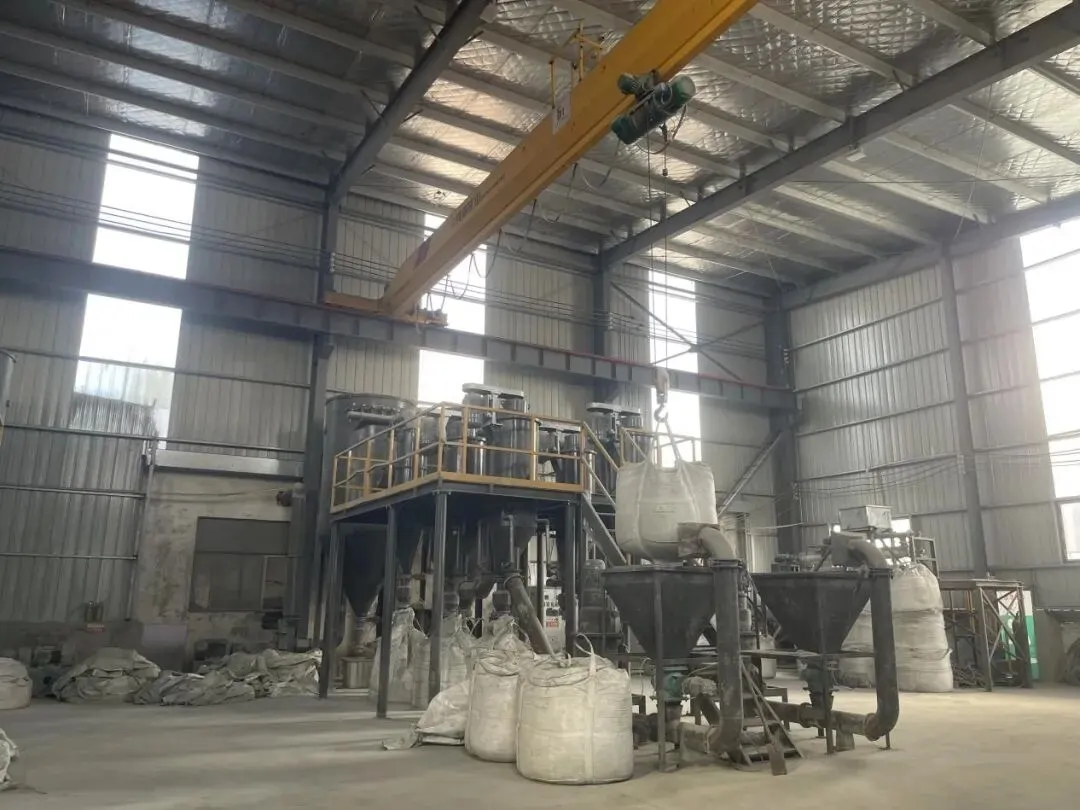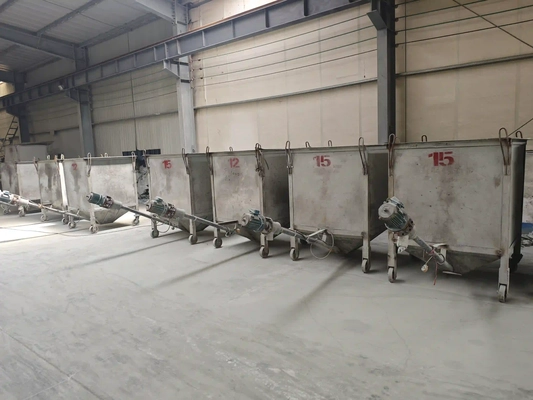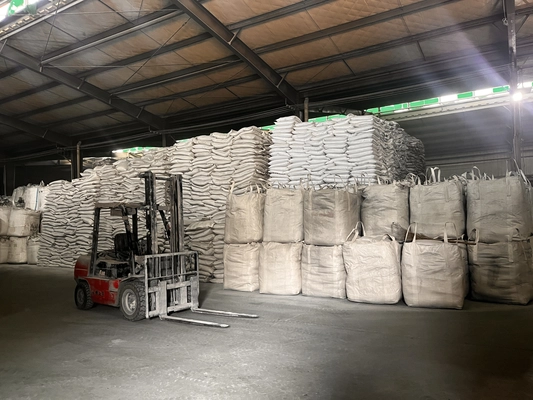Quick Answer
A professional silicon carbide (SiC) supplier does far more than ship abrasive grains or powders. The right partner manages raw material selection, furnacing routes, crushing and classification, particle-size distribution (PSD) control, surface chemistry, cleanliness, packaging integrity, export documentation, and on-time logistics. Buyers should evaluate suppliers on standard compliance (FEPA/JIS), batch-level test data (D10/D50/D90, chemistry, moisture, magnetic content), quality management, traceability, and the ability to configure grades for application-specific performance in abrasives, refractories, metallurgy, and advanced ceramics.
Table of Contents
- Understanding Silicon Carbide and Its Industrial Role
- What a Silicon Carbide Supplier Actually Provides
- Grit Grading and PSD: FEPA/JIS and D10/D50/D90
- Quality Management, Testing, and Traceability
- Packaging, Documentation, and Regulatory Compliance
- Global Supply Chain, Incoterms, and Lead Times
- Supplier Types: Manufacturer vs. Trader vs. Distributor
- Supplier Evaluation Checklist and RFQ Template
- Cost Drivers and How to Compare Quotes
- Common Pitfalls and Risk Mitigation
- Why CanAbrasive Can Be Your Silicon Carbide Supplier
- Conclusion
Understanding Silicon Carbide and Its Industrial Role
Silicon carbide (SiC) is a high-hardness, high-thermal-conductivity ceramic used across heavy industry and precision manufacturing. In bonded and coated abrasives, SiC delivers fast material removal and sharp cutting action; in refractories, it supports thermal shock resistance and structural stability; in metallurgy, it serves as a deoxidizer and carburizer; and in advanced ceramics, micronized SiC becomes feedstock for sintered and reaction-bonded components. Black SiC (typically 97–99% SiC) offers toughness and cost efficiency for grinding and blasting, while green SiC (≥99% SiC) provides higher purity and sharper friability for lapping, polishing, and ceramic processing.
From a purchasing perspective, “silicon carbide supplier” searches map to distinct intents: sourcing macro grits (F12–F220) for abrasives and blasting, micro grits (F240–F1200) and micronized powders for polishing and sintering, and lump/granular fractions for refractories and metallurgical additions. A capable supplier should cover this portfolio, translate requirements into manufacturable grades, and maintain consistency across shipments and geographies.
What a Silicon Carbide Supplier Actually Provides
Procurement teams often underestimate the breadth of responsibilities a reputable SiC supplier assumes. Beyond production and warehousing, the supplier’s scope typically includes:
1) Raw material and process control. Managing quartz/petroleum coke inputs, furnacing conditions, and post-furnace refining steps directly affects chemistry (SiC%, free Si, free C), inclusion levels, and crystal morphology. This is foundational to performance and downstream yield.
2) Crushing, classification, and blending. After furnacing, SiC is crushed, milled, and classified to produce standard FEPA/JIS macro and micro grits. Suppliers may blend lots to tighten PSD windows, equalize color across batches, or meet special process constraints like low magnetic content or low LOI (loss on ignition).
3) Application-specific tuning. Grades are tuned for bonded wheels, coated papers, blasting, lapping pastes, CMP-adjacent slurries, sintering feedstocks (SSiC/RB-SiC), or metallurgical deoxidation. That tuning may include surface conditioning, moisture control, and packaging options that protect cleanliness and flowability.
4) Documentation and compliance. Batch-wise Certificates of Analysis (COA), Safety Data Sheets (SDS), and Technical Data Sheets (TDS) should accompany shipments. For many markets, REACH and RoHS declarations, plus third-party inspections (e.g., SGS), are valuable or required.
5) Export logistics and stocking. Suppliers coordinate EXW/FOB/CIF/DDP terms, palletization, fumigation where applicable, and consolidation for sea or air freight. Experienced teams keep buffer stock to smooth demand fluctuations and reduce lead-time risk.
Grit Grading and PSD: FEPA/JIS and D10/D50/D90
Two elements define whether a silicon carbide grade behaves as expected in your process: the nominal grit designation (FEPA/JIS/ANSI) and the delivered particle-size distribution (PSD). Macro grits (e.g., F24, F36, F60) focus on screen cuts and top-cut/median control. Micro grits (F240–F1200) and micronized powders require laser diffraction or sedimentation methods to validate D10/D50/D90, span, and tail percentages.
When qualifying a supplier, insist on the following:
• Standard conformity: Certificates confirming FEPA or JIS compliance per grit. For micro grits, the supplier should state the method (e.g., laser diffraction model/settings) and provide repeatability data.
• PSD windows: For critical processes, specify acceptable D10/D50/D90 ranges and ask for actual batch data. Narrow windows give predictable removal rates and surface roughness (Ra/Rz), while overly broad windows can cause variability, burning, or polish haze.
• Cleanliness and magnetic content: Residual iron or magnetic particles can scratch polished substrates and disturb sintering. Many buyers define a maximum ppm magnetic content and require demagnetization steps.
• Moisture and LOI: Elevated moisture affects flow, dosing, and binder systems. LOI controls are important for refractories and sintering feedstocks.
Quality Management, Testing, and Traceability
Quality assurance is not just a stamp; it is a system. Look for suppliers operating under ISO 9001 with documented control plans and retained samples per batch. A robust QA program commonly includes:
Analytical chemistry: SiC%, free Si, free C, and impurity profiles (Fe, Al, Ca, Ti, etc.). Green SiC buyers may request tighter limits to preserve optical-grade finishes or ceramic purity.
PSD verification: Routine screens for macro grits and instrumented PSD for micro/micronized lots, with control charts and corrective actions for out-of-window results.
Physical testing: Bulk density, true density, friability indices, and abrasion tests aligned with application needs.
Contamination controls: De-magnetization, targeted washing, and foreign matter checks. Suppliers should disclose their controls and typical residual levels.
Traceability: Each bag and pallet should tie back to a batch record, test results, and retained samples. This is vital for root-cause analysis and continuous improvement.
Packaging, Documentation, and Regulatory Compliance
Packaging protects the product and your process. Standard options include 25 kg plastic-lined bags (palletized) and 1,000 kg FIBC big bags with inner liners for moisture control. For micronized grades, multilayer moisture barriers reduce clumping and help preserve PSD and surface condition. Labels should show grade, lot/batch IDs, net weight, and handling guidance.
Documentation should be shipment-synchronized: COA matching lot numbers, SDS aligned to the latest regulatory format, and—where required—REACH/RoHS compliance statements. Many import markets appreciate or require third-party inspection reports, packing lists with harmonized codes, and clear country-of-origin details. Exporters serving the EU, UK, and North America should be comfortable with audit questions and paperwork standards in those regions.
Global Supply Chain, Incoterms, and Lead Times
Lead time is a function of grade availability, production scheduling, and transit. Stock grades of macro grits can be dispatched promptly, sometimes within days; custom micro/micronized cuts require scheduling and QA sign-off. Typical sea freight schedules range from two to six weeks depending on destination and transshipment. Air freight is faster but may be reserved for high-value micro powders or urgent maintenance outages.
Incoterms govern risk transfer and cost allocation. EXW/FOB terms suit buyers with established forwarders, while CIF/DDP terms appeal to teams that want the supplier to coordinate shipping and import formalities. Clarify pallet specs, fumigation requirements, and receiving dock constraints in the RFQ to avoid delays or repackaging mid-route.
Supplier Types: Manufacturer vs. Trader vs. Distributor
Manufacturers operate furnaces and in-house classification facilities. They can tailor chemistry and PSD tightly, scale reliably, and provide deep process support. Traders aggregate output from multiple plants, offering breadth and flexible availability, though consistency depends on vendor management and in-house QA. Distributors maintain regional stock for fast delivery and local service, often focusing on standard grades and popular pack sizes. Many international programs blend these roles: a manufacturer with export trading capability and regional distribution achieves both consistency and reach.
Supplier Evaluation Checklist and RFQ Template
Use the following checklist to structure supplier qualification. The more specific your RFQ, the more accurate and comparable the quotations will be.
A) Company and Quality System
• ISO 9001 certificate and scope; QA organizational chart; batch retention policy.
• Testing capability and methods (screens, laser diffraction model, magnetics measurement, moisture/LOI).
• Traceability flow from lot to bag/pallet; corrective action process.
B) Product Definition
• Grade and form: black or green SiC; lumps/granular; macro grits (F12–F220); micro grits (F240–F1200); micronized powders (target µm).
• PSD windows: D10/D50/D90 targets with acceptable tolerances; tail limits where relevant.
• Chemistry/purity window; magnetic content limit; moisture/LOI limit; special surface or cleanliness requirements.
• Intended application: bonded/coated abrasives, blasting, polishing/lapping, refractories, metallurgy, sintering feedstocks.
C) Packaging and Labeling
• Bag type and liner; big-bag specs; pallet configuration; barcode or private-label needs.
• Storage guidance and shelf-life statements for micro powders.
D) Logistics and Trade Terms
• Incoterms (EXW/FOB/CIF/DDP), port of loading, shipment frequency, safety stock policy.
• Documentation set: COA, SDS, TDS, REACH/RoHS, inspection options; country-of-origin; HS code.
E) Commercials
• Price per metric ton or per bag; breaks for monthly/quarterly volumes; payment terms.
• Lead times for stock and custom grades; minimum order quantities; sample availability.
Ready-to-use RFQ prompt (paste into your email):
“Please quote [Black/Green] Silicon Carbide grade for [bonded abrasives / coated abrasives / blasting / polishing / refractories / metallurgy / sintering]. Required forms: [F-grits range or target micron size]. Target PSD window: D10 [x] µm, D50 [y] µm, D90 [z] µm. Chemistry/purity: [spec]. Max magnetic content: [ppm]. Max moisture/LOI: [%]. Packaging: [25 kg bag / 1,000 kg FIBC] with labeling [requirements]. Incoterms: [EXW/FOB/CIF/DDP + destination]. Please include COA/SDS/TDS templates, lead time, and available inspection options.”
Cost Drivers and How to Compare Quotes
Unit price reflects more than purity. Core drivers include raw material costs, energy for furnacing, processing complexity (especially micronization and classification precision), QA intensity, packaging type, and logistics lanes. Buyers often achieve better total cost by aligning grade to process requirements rather than simply selecting the lowest price per ton.
When comparing quotations, normalize on:
• Delivered PSD and its tolerance. Tighter PSDs command a premium but reduce process variability and rework.
• Contamination limits and cleanliness controls. Low magnetics and clean surfaces reduce scratch defects and downstream tool wear.
• Packaging materials and handling. Moisture-barrier liners and palletization standards reduce damage and caking risk.
• Documentation scope. Some suppliers price in third-party inspection or REACH paperwork; others list them as options.
• Incoterms and transit time. CIF/DDP quotes embody freight and customs risk; EXW/FOB shift those to the buyer. Factor total landed cost, not just ex-works price.
Common Pitfalls and Risk Mitigation
1) Assuming grit number equals performance. Two F600 batches from different vendors can lap or polish very differently. Insist on PSD data and sample trials.
2) Overlooking magnetics and fine tails. Even ppm-level magnetic contaminants or outlier fines can introduce scratches or haze. Set explicit limits.
3) Ignoring moisture control. Micro powders are hygroscopic enough to cause dosing issues or caking. Specify liners and storage guidance, especially for humid regions.
4) Treating documentation as an afterthought. Missing COA alignment with bag labels or incomplete SDS versions delays customs clearance and internal QA release.
5) Single-sourcing without contingency. Build dual-source options for critical lines, maintain qualified alternates, and keep technical dossiers updated for rapid switches.
Why CanAbrasive Can Be Your Silicon Carbide Supplier
As a focused industrial supplier, CanAbrasive provides a full SiC portfolio—black and green silicon carbide in lumps, macro grits (F12–F220), micro grits (F240–F1200), and micronized powders—supported by ISO-based quality control, FEPA/JIS grading, and export-ready documentation. We verify PSD (D10/D50/D90) per lot, control moisture and magnetic content, and offer packaging suited to blasting, grinding, polishing, refractory forming, and sintering feedstocks. Our logistics team coordinates EXW/FOB/CIF/DDP deliveries to major ports worldwide with safety stock strategies for stable supply.
Explore our commercial landing page for sourcing details and specifications: Silicon Carbide Suppliers. For product-level information, see Black Silicon Carbide and Green Silicon Carbide. If you’re working on powder selection or PSD windows, consult our buying guide at Silicon Carbide Powder Suppliers.
Our Silicon Carbide Factory & Equipment
CanAbrasive operates ISO-compliant silicon carbide production lines equipped with advanced furnacing, crushing, classification, and inspection systems. Each step is engineered for consistency, cleanliness, and batch-level traceability.

Acheson Furnace Workshop

Crushing & Sieving Line

FEPA Grit Classification System

In-house Chemical & PSD Laboratory

Automated Packaging Area

Finished Goods Warehouse
Interested in sourcing directly from our factory? Contact CanAbrasive for product details or bulk quotations.
Conclusion
A high-performing silicon carbide supply program depends on more than finding a competitive price. It requires a partner who can translate process targets into enforceable specifications, produce to standard, document results, and deliver consistently across borders. By qualifying suppliers on grading accuracy, PSD control, cleanliness, documentation, and export competence—and by writing RFQs that pin these details down—buyers reduce risk, stabilize performance, and often lower the total cost of ownership. If you need a supplier capable of serving abrasives, refractories, metallurgy, and advanced ceramics with batch-verified quality and global logistics, contact CanAbrasive to configure the right SiC grade for your line.
FAQ
What is the difference between black and green silicon carbide for sourcing purposes?
Black SiC (about 97–99% SiC) is tougher and cost-effective, ideal for grinding wheels, coated abrasives, and blasting media. Green SiC (≥99% SiC) is higher purity with sharper fracturing behavior, favored for lapping and polishing, optical work, and ceramic sintering where contamination must be minimized.
Which standards should a silicon carbide supplier meet?
Expect FEPA or JIS grit compliance, ISO 9001 quality systems, and batch-level COA. For micro/micronized grades, insist on instrumented PSD verification (D10/D50/D90). Many buyers additionally request REACH/RoHS statements for EU shipments and accept third-party inspections (SGS/BV) where appropriate.
How important are D10/D50/D90 values compared with the nominal grit?
Nominal grit numbers are not sufficient for precision processes. D10/D50/D90 quantify the distribution, providing a clearer picture of expected removal rate, scratch morphology, and polish behavior. Tight windows reduce variability and rework, especially in lapping and sintering feedstock preparation.
What packaging is recommended for micronized SiC powders?
Use multilayer moisture-barrier bags with inner liners, sealed and clearly labeled with lot IDs and handling guidance. Palletization should prevent compression that could cause caking. For humid climates, moisture control is critical to preserve flowability and PSD integrity.
What documents should accompany shipments?
Shipments should include COA referencing lot numbers, SDS, TDS, packing lists with HS codes, and, if requested, REACH/RoHS compliance statements and third-party inspection reports. Clear country-of-origin details and consistent bag labels accelerate customs and receiving-QA release.
How do I compare two quotations on a fair basis?
Normalize by PSD windows, contamination limits (magnetics/ppm), packaging type, documentation scope, Incoterms, and lead time. A lower ex-works price may hide costs or risks that raise total landed cost or increase process variability.
Can a supplier support both abrasives and advanced ceramics with the same product?
Usually not with a single grade. Abrasives often favor toughness and cost efficiency, while advanced ceramics require higher purity, tighter PSD, and lower contamination. A versatile supplier will configure distinct grades and provide matching documentation for each use case.
What are typical lead times for stock and custom grades?
Stock macro grits can ship in days depending on inventory. Custom micro/micronized cuts require scheduling and QA verification, typically adding one to three weeks before dispatch. Transit time then depends on the chosen lane (sea vs. air) and destination.
Do I need demagnetized silicon carbide for polishing?
For many polishing and lapping processes, yes. Even trace magnetics can introduce scratched surfaces and reduce yield. Set a maximum allowable magnetic content in the RFQ and request the supplier’s de-mag process description and typical ppm results.
